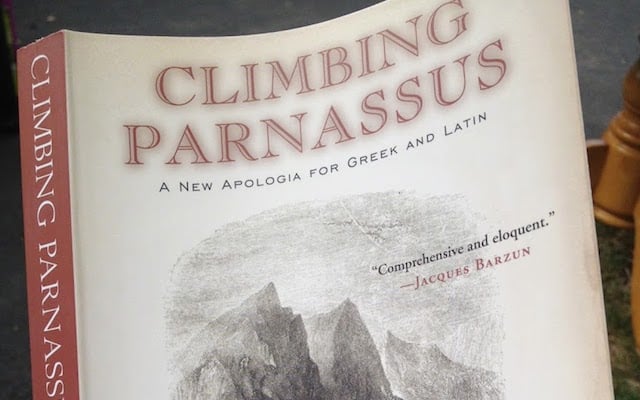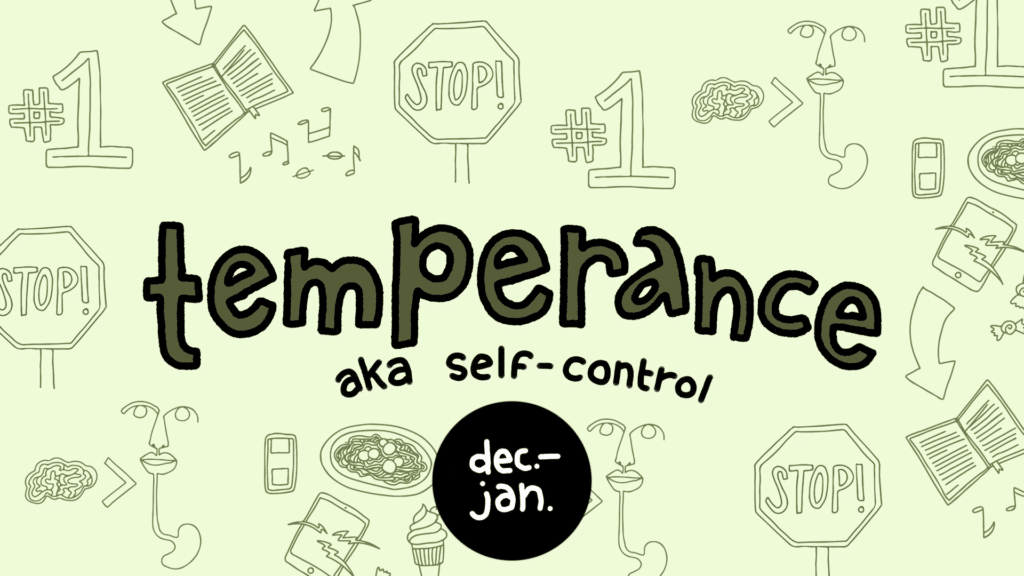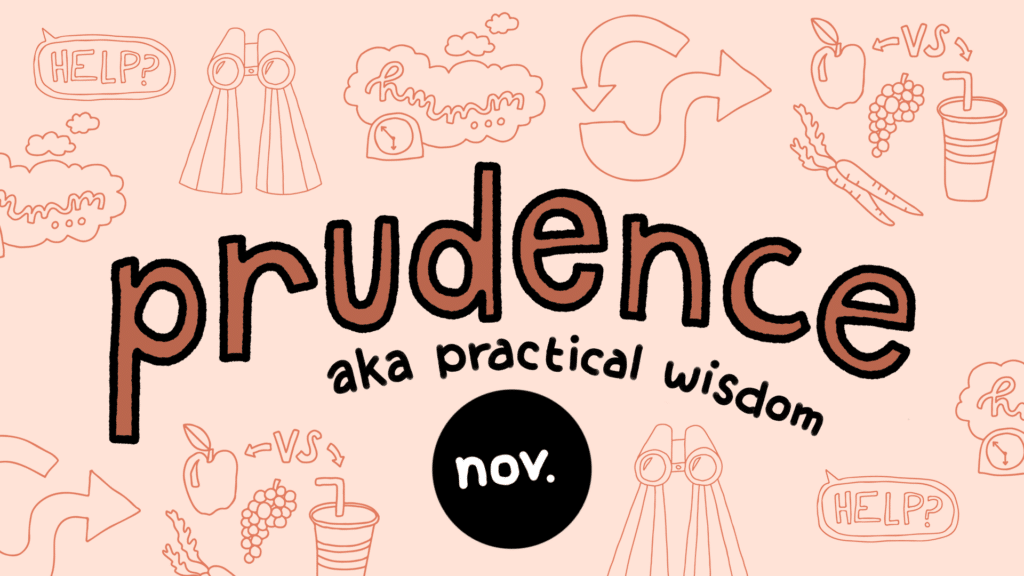
{image credit: Classical Conversations at Home}
Today we bring you another wonderful book review in this series, designed to give you insight into both classical education, and why we do what we do here at SLOCA:
Pedagogic Ponderings
Mrs. Burns’ Book Review Blog
Pedagogic Ponderings is a blog review of pedagogic (educational) books by our own Jenna Burns. After teaching History and Language Arts at SLOCA UMS for five years, Jenna is taking this year off of teaching to care for her new daughter, Julianna. But she is not taking a break from learning! She is seeking out the best books on education, reading them, pondering them, and reviewing them for us. In her blog she gives us a snapshot of the books and how their educational philosophies connect to what we are doing at SLOCA. We hope her blog helps you better understand classical education and our school.

This month I’m reviewing Climbing Parnassus by Tracy Lee Simmons. I chose this book to review because I wanted to better understand why we have our students learn Latin. It turns out the scope of Simmons’ book goes way beyond that question. Reading his book greatly increased my knowledge of the philosophy, history, and purpose of classical education. So, read this month’s blog to see pictures of Mrs. Burns’ trip to Seattle, discover whom CS Lewis considers a “dunce,” and understand why Latin is so very important.
Julianna and I recently went to Seattle, tagging along with my husband who had a work trip. Here are some pictures of our adventures!
/waterfallpark.jpg)
Lunch at waterfall park
/fishmarket.jpg)
Check out her reaction to Pike’s Fish Market
/octopus.jpg)
Selfie with the octopus at the Aquarium
/enjoyinghotel.jpg)
Enjoying our hotel
I read Climbing Parnassus by Tracy Lee Simmons during airport layovers and at night when we had to be quiet from 6:30 on so as not to wake the baby in our tiny hotel room. But this book is intellectual. Reading it is a slow process, requiring careful attention, reflection, and, if you’re like me, a dictionary. Honestly, to properly review this book I feel I would need to read it again. Since I don’t have that much free time, I will instead take seven common questions regarding teaching Latin and answer them, keeping in mind what I learned from Climbing Parnassus. I want to emphasize that this does not even begin to do the book justice. Climbing Parnassus is a complete look at the philosophy, history, and need for a classical education. Simmons is eloquent and the book’s content is comprehensive. But reading it is absolutely worth the effort. SLOCA parents who read it will walk away with a better understanding of the philosophy and longstanding tradition of classical education. When grandmas ask, “Why in the world is my grandchild learning Latin?” they will answer intelligibly. So, if you can, read the book. But for now, let’s turn to some common questions.
Isn’t Latin a dead language?
J.W. Mackail counters this assumption with: “Latin and Greek are not dead languages. They have merely ceased to be mortal” (qtd. in Simmons 245). A quick look at Mrs. Weinschenk’s “Latin in Our World” bulletin board will attest to the truth of that. Latin will always be among us, in our language, architecture, philosophy, and government. Its immortality makes it, “the most long-sighted view it is possible to take,” (Evelyn Waugh qtd. in Simmons 237).
Behind this question, though, is the desire to have our children learn a modern language, because we have images of them travelling to a foreign country and speaking fluently, perhaps even as a part of their career. Granted this will be true for a few, but I know for myself the most I really ever did with my three years of Spanish was ask for the baño. English would probably have been understood just fine.
Still, insofar as we won’t be hearing Latin spoken as a matter of course, consider that that is a benefit: “Greek and Latin were so taught for so many centuries because they were not native. Their very strangeness and dissimilarity to modern languages made them a unique, irreplaceable tool of teaching for those who would comprehend the workings of language en tout, “ (164 – 165). Once a student has mastered the foreignness of Latin other foreign languages will be mastered all the quicker.
Aren’t there more important subjects to learn?
Simmons reminds us that historically schools of the best caliber, “didn’t try to do too much; they tried to do the most important things,” (186). This raises the question, since we can’t teach everything worth knowing, what are the most important things to teach?
To answer this SLCOA trusts in “the high degree of selectivity” that was involved when, “successive generations of critics, scholars, and lay readers deemed [what was] worth preserving. The crème de la crème had risen to the top and been scraped off, leaving us with the best they had thought and said,” (196). This is the classical literature of Virgil, the philosophy of Seneca, the orations of Cicero. To read the classics in their original is to read the best in the best way. It is to most fully experience them, to understand their nuances, and experience their true rhythm and rhyme. As Simmons points out, “If we would be great, we must spend time with great things,” (164).
Shouldn’t we learn something useful instead?
What is Latin good for? “‘Let us not forget,’ Emerson once said, ‘that the adoption of the test what is it good for would abolish the rose and exalt in triumph the cabbage.’ And man cannot live by cabbage alone,” (qtd. in Simmons 213). Even if learning Latin had no use (which is irrefutably incorrect) there would still be beauty and meaning in its pursuit.
To fully answer this question, however, we must address the confusion between vocational training and education. The first is about teaching “useful” (think marketable) skills, while, “the second aims to form the mind, to instruct the intellect itself,” (152). The rigors of Latin form the mind. As classical education proponent Albert Jack Nock explains in his memoirs, “Education should not be. . . a preparation for making a living, but a preparation for living,” (qtd. in Simmons 157).
Perhaps this argument conjures up the image of your child majoring in philosophy and living, unemployed, in your basement. We cannot predict the future, “But this we know: Ignorance is no asset, and the empty, formless mind is a positive liability. Few qualities can be more useful, whatever one’s future may hold, than the fortified mind,” (214).
Can’t you get the same benefits from learning a modern romance language?
At SLOCA, Latin is not being offered instead of a modern language, but as a preparation for, and complement to learni
ng a modern language. Starting Latin so young gives SLOCA students the chance to add on a modern language later in high school or college. When they do add on a modern language, they will learn it all the quicker for knowing Latin. Learning any second language is, of course, useful, and learning Latin is the most beneficial of all. Here is why.
Latin develops our vocabulary more than modern languages can. Because English “takes about sixty percent of its words” from Latin, the student who studies it, “will own an obvious edge with English over those who haven’t,” (168). While it is true that learning any modern romance language will broaden one’s English vocabulary, consider: “Not only has [the Latin] student learned what the words mean, he has learned what they have meant; he has seen them jostling and lounging in their original habitat . . . ‘Liberty’ never means the same thing after our backs have been burdened with the full Roman weight of libertas,” (168). It is an asset to have a wealth of words at your fingertips that you understand fully and can use with precision.
Latin exercises the mind more than modern languages can, because unlike other languages, “every lesson in Latin is a lesson in logic,” (177). To translate “the simple two-word Latin sentence Vellem mortuos . . . requires fourteen intellectual turns,” (177). Though the translation of modern languages also requires thought and attention to detail, the logic of Latin demands mental gymnastics leading to the agile, disciplined mind.
Latin improves one’s English grammar and composition more than modern languages can. “Latin . . . teaches us to communicate efficiently and well with finely tuned clauses and well-considered words . . . Practice with Latin composition tightens expression,” (170).
Shouldn’t we put our trust in modern educational practices?
As a classical school, SLOCA intentionally chooses not to follow certain modern educational practices, like standardized testing. As Simmons points out: “Will one follow fashion and personal whims of the moment? Or will one take his cues from what has been established as the best the world has to offer?” (193). For centuries it is a matter of fact that classical education (including the learning of Latin) was considered the best. It was the education par excellence for the western elite, national leaders, innovators, and canonical poets. Boarding schools of the rich to the neighborhood schoolhouse of Shakespeare aspired to its heights. No one questioned the merits of classical education; its proof evident in the great men and women across the ages.
What could shake such foundations? World War One. It changed the very canvas of our culture. It brought on “blasted ideals and the horror of those fine, educated young men now lying in foreign graves . . . Heroism was dead . . . as was the ideal of the gentlemen . . . A new world waited to be built,” (147). Modern educational reform rose to answer the call for commercial knowledge, and as a result the course of education took a drastic change. It abandoned the solid evidence of our ancestors, departing from the pursuit of the True, the Good, and the Beautiful. And we have never recovered. Reform has followed reform, each promising to be the solution. While some put their hopes in the newest – the Common Core – Simmons warns, “It’s better to have sat at the feet of our betters than to pretend we’re those betters ourselves,” (155).
Isn’t appreciation for Latin culture enough?
At SLOCA we take a whole year to study ancient cultures. Our students know about Rome’s history, architecture, mythology, and government. Isn’t this knowledge sufficient, making learning Latin unnecessary? CS Lewis, in his essay “The Parthenon and the Optative,” spoke to the difference between learning ancient languages versus learning about their cultures:
The one begins with hard, dry things like grammar, and dates, and prosody; and it has at least the chance of ending in a real appreciation . . . The other begins in “Appreciation” and ends in gush. When the first fails it has, at the very least, taught the boy what knowledge is like. He may decide that he doesn’t care for knowledge, but he knows he doesn’t care for it, and he knows he hasn’t got it. But the other fails most disastrously when it most succeeds. It teaches a man to feel vaguely cultured while he remains in fact a dunce. (qtd. in Simmons 188)
There is a difference between the student who simply learns about the Roman poet, Ovid, and the one who reads his famous work, Metamorphoses. While I may not go so far as to call the first a dunce, the second will clearly have a much deeper understanding.
Isn’t learning Latin too much hard work to require of children?
SLOCA students are working hard in all their subjects. With all its memorization and grammar, sometimes Latin seems the hardest of them all. In Simmons’ book, Parnassus (a mountain in Greece) becomes a symbol of all that arises from a classical education: “inspiration, eloquence, refined polish, and grace,” (245). With such great rewards, it is no surprise that struggle and hard work are required; for, “Nil sine magno vita labored edit mortalibus. Life gives nothing to us without tremendous work and sacrifice,” (165). This is an important truth for our children not just to hear but also to experience first hand.
/mountparnassus.jpg)
Mount Parnassus {image credit: Wikipedia / CC BY SA 3.0}
Simmons, Tracy Lee. Climbing Parnassus: A New Apologia for Greek and Latin. Wilmington: ISI Books, 2012. Print.
I hope this blog was helpful in informing and inspiring your pursuit of Latin and the broader classical studies. Coming up next time is my review of Last Child in the Woods: Saving our Children from Nature – Deficit Disorder by Richard Louv. I chose this book to review because I always wanted, but struggled, to find a way to incorporate nature in my classroom. Hopefully Louv will have some wisdom to share!

Thank you Jenna! Once more, you have given us much to ponder, and much to look forward to in reading this excellent book. Parents, we encourage you to build and use your own valuable library of classical resources using this blog series!
Has this answered some of your own questions about “Why Latin?” Has anyone else read this book, and do you have your own thoughts to share about it? Leave a comment below!
Other reviews in this series:
The Read-Aloud Handbook by Jim Trelease
Ten Ways to Destroy the Imagination of your Child by Anthony Esolen
The Well-Trained Mind by Susan Wise Bauer and Jesse Wise
The Core by Leigh A. Bortins
How to T
each Your Children Shakespeare by Ken Ludwig
Last Child in the Woods: Saving our Children from Nature-Deficit Disorder by Richard Louv
Play: How it Shapes the Brian, Opens the Imagination, and Invigorates the Soul by Dr. Stuart Brown
SLO Classical Academy is not affiliated with any of the above mentioned websites.











